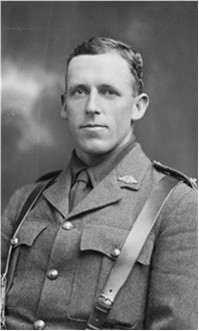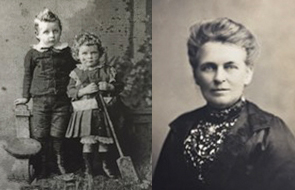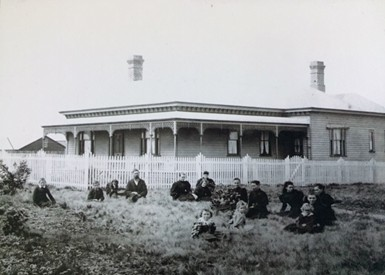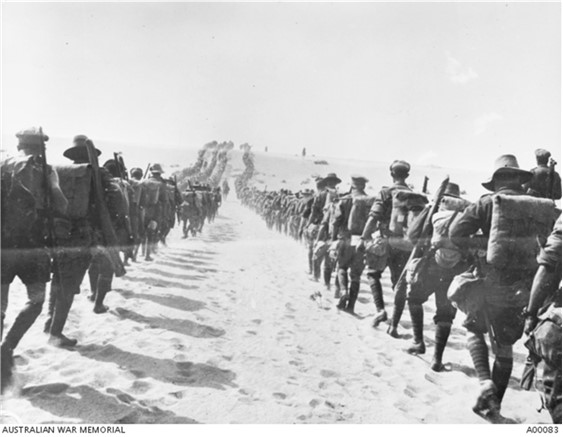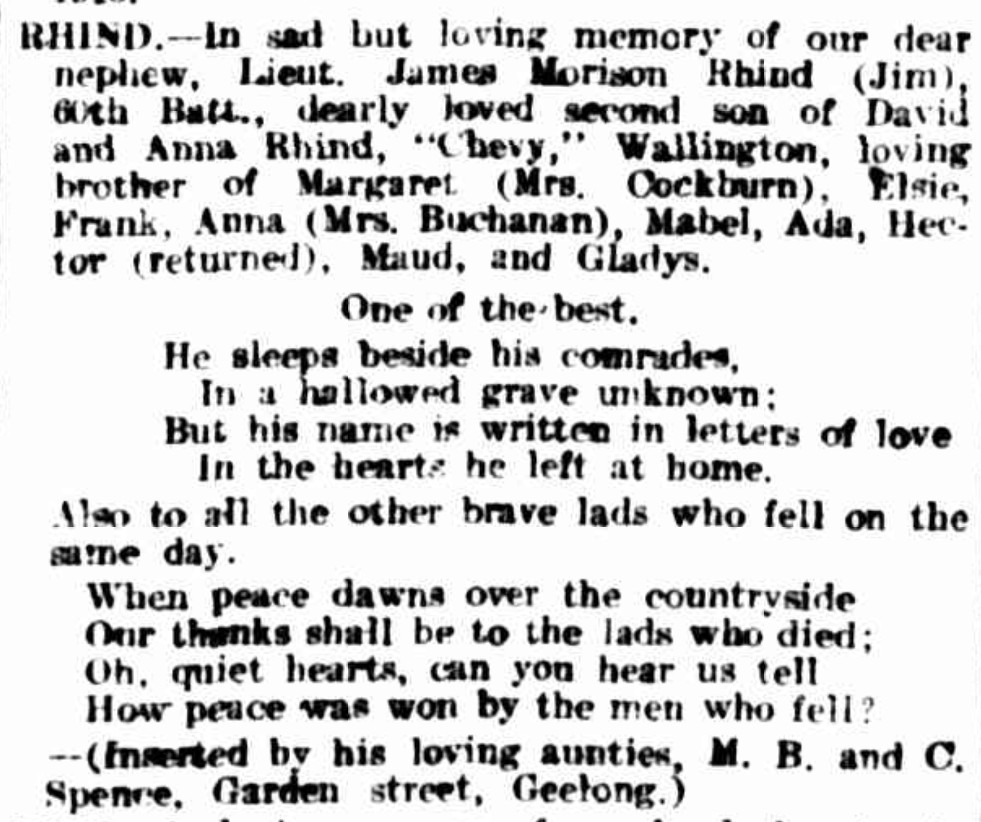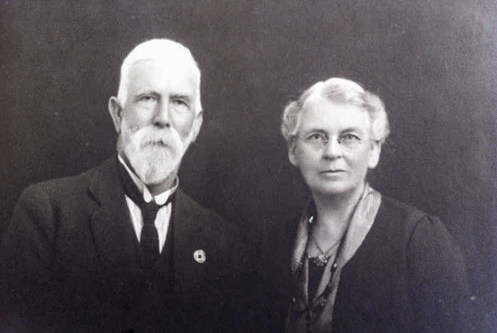James Morison RHIND
Eyes blue, Hair brown, Complexion fair
Jim Rhind – “One of the Best”
Can you help us identify Jim?:
In 2008 a mass grave was found at Fromelles, a grave the Germans dug for 250 (Australian) bodies they recovered after the battle.
Jim was killed in Action at Fromelles. There is a chance he might be identified, but we need help. We are still searching for suitable family DNA donors.
If you know anything of contacts for Jim here in Australia or in Scotland, please contact the Fromelles Association.
See the DNA box at the end of the story for what we do know about his family.
With thanks to Jim’s Great Niece Jacqueline McFarland for providing her comprehensive family history and personal insights for this story.
A Strong Moral Compass from His Early Life
James (Jim) Morison Rhind, was born on 19 April, 1887 at Geelong, Victoria, the fourth of David and Anna (nee Spence)’s ten children, seven daughters and three sons:
- Margaret Leslie 1882-1949
- Elspet Agnes Jane (Elsie) 1883-1962
- Francis John (Frank) 1885- 1959
- James Morison (Jim) 1887-1916
- Anna Millar 1889-1951
- Mabel Catherine (Mabs) 1891-1972
- Ada Barbara 1893-1978
- Hector George (Hec) 1895-1967 (AIF 483), returned to Australia)
- Madeline Victoria (Maud) 1897-1977
- Gladys Irene (Glad) 1899-1969
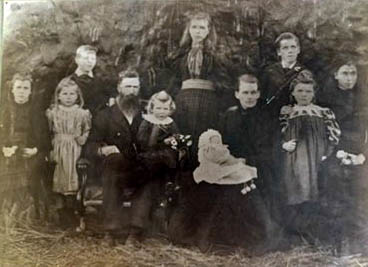
Anna Millar Rhind, Ada Barbara Rhind, James Morison Rhind, David Rhind, Madeline Victoria Rhind (on David’s knee), Margaret Leslie Rhind (at centre back), Anna Millar Rhind (nee Spence), Gladys Irene Rhind (on knee), Francis John Rhind, Mabel Catherine Rhind, Elspet Agnes Jane Rhind. Absent ~ Hector Rhind (Aged~ 4 years)
Jim’s family had a history of strong personal and community commitments which inculcated Jim with a strong moral compass. Jim’s father’s family emigrated from Scotland to New Zealand in 1863 when he was young and many of the Rhinds remain there. The family left Scotland because of their faith and religion. The Church of Scotland had broken up and when the New Church of Scotland was formed in 1843 the Rhinds went with this group because the Church of Scotland was determining who would Minister the congregations and the Rhind family were having none of it.
Their Grandson Jim remained an active practitioner of his faith throughout his life. David became a farmer who was regarded as very capable and quite ingenious. He was managing a farm independently at the age of seventeen in New Zealand. In the 1870s, David and his brother George became early settlers in northern Victoria, Australia. Jim’s mother, Anna Millar Rhind (nee Spence) also came from Scottish immigrant parents, David Spence and Margaret Leslie Morison.
They had emigrated in 1852 from Burntisland, Scotland to the Bendigo goldfields, where they ran a General Store. The Spence family later moved to Avenel, Victoria. Following Anna’s father David Spence’s death in 1879, Anna’s mother and sisters had land at Strathmerton near David Rhind’s selection at Yarroweyah. David and Anna married in 1881 and lived in the Yarroweyah area.
In 1886, as a young family with three children seeking better education opportunities and cooler weather, David and Anna purchased the farm 'Chevy' at Wallington, nine miles from Geelong, an established 3000 acre property which they developed into an exceptionally large and varied farm. It was described by the Geelong Advertiser in 1906 as ‘one of the best-known properties around Geelong’ with its location ‘on the hills overlooking the lakes’. David had expanded the farm into dairy, growing all grains, horses, sheep and even importing the first Hong Kong geese into Australia. Jim was born here.
David was interested in all community affairs - a member of the Agricultural Society, the Scottish Society Comunn na Feinne, a Justice of the Peace and he was a Moolap Shire Councillor. Anna was also an active participant. In 1900 she won the prize for the greatest number of exhibits made from farm produce at the Geelong Agricultural Show. All the Rhind children attended school in Geelong and stayed with their maternal maiden aunts at 60 Garden Street, but the aunts were very strict.
“Jim’s brother Hector described Sundays as oppressive for a young and energetic boy - entertaining books could not be read on Sunday, only serious ones like the Bible; or if he whistled to relieve the boredom when chopping wood, one of his Aunts would rush out of the house and warn him that he would go to bed without any tea if he continued; and to laugh on Sunday was an extremely wicked thing to do.”
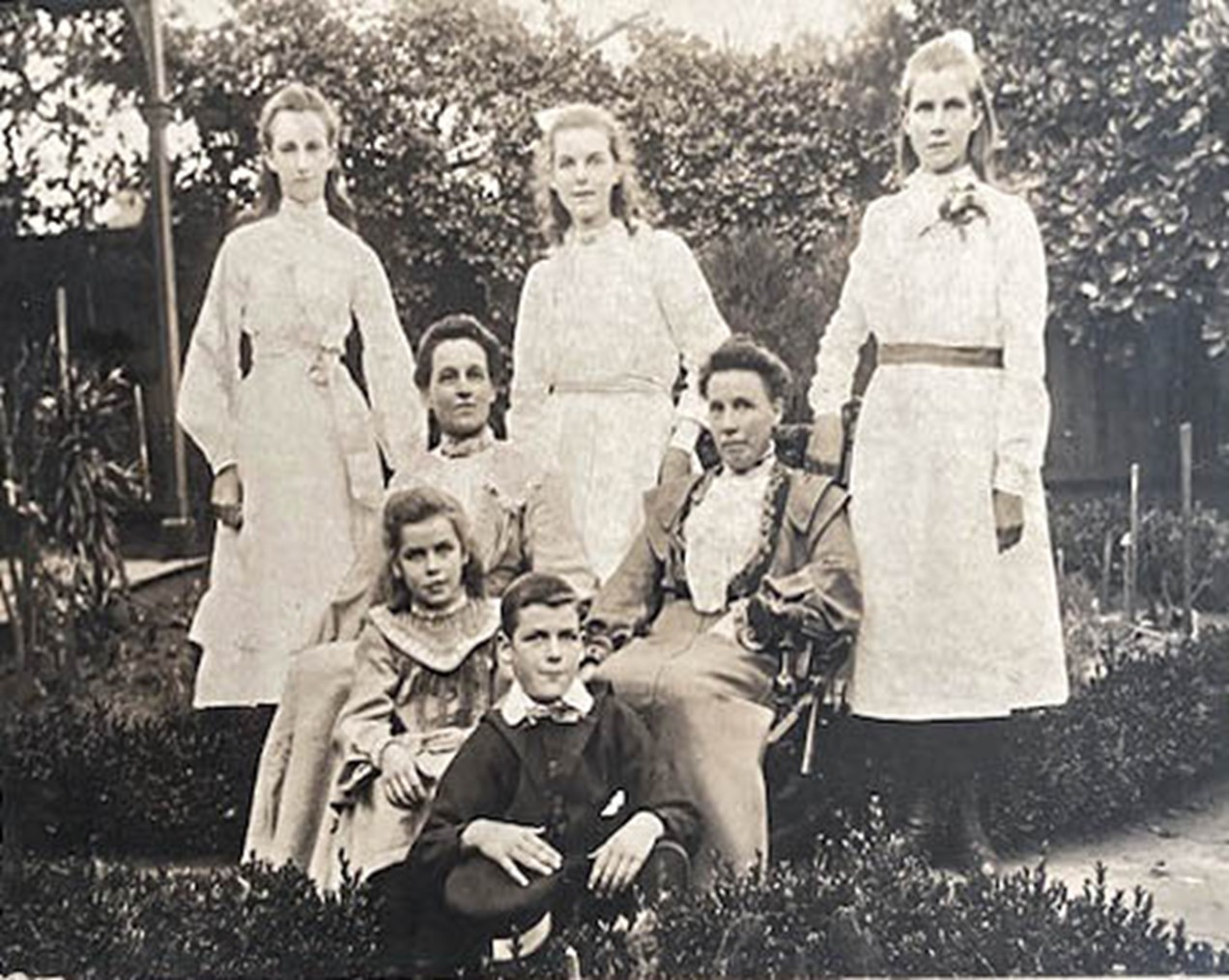
(back) Cousin Eva Mortimer, Sisters Mabel and Ada
(front) Madeline and Hector
While the Rhind household was a very strict one, Scottish Presbyterian to the core, Jim shared many talents and traits of his father David and he also had a softer side that reached out and nurtured others. Jim attended the Swanston Street State School in Geelong. He then completed a course in Bookkeeping and another course as a Second-Class Engine Driver at Gordon Technical College. During his studies, he spent two years in the Army Cadets.
After this, he followed in his father’s footsteps and became a farmer. Jim and his elder brother Frank shared a property called ‘Craigmillar’, near Miles, 300 km west of Brisbane, from about 1910 to 1915. Their eldest sister Margaret was a housekeeper there.
Off to War
Jim enlisted in the AIF on 14 April 1915 at Melbourne, Victoria and was assigned to the 7th Reinforcements, 22nd Battalion as a 2nd Lieutenant. His Grand Niece Jacqueline writes of Jim’s strong enthusiasm to enlist, as was typical of many young Australians:
“I believe Jim saw himself as doing a service for King and Country as demonstrated in a 24 November 1915 letter to his sister Mabel where he says. “We feel as if we were doing some good but hope for a chance further afield to do more.”
Jim had a sense of humour and the Army discipline was perhaps not so strict for him because of his fiercely religious, very disciplined Scottish background. The Army allowed him freedoms he had not seen before and he would have seen it as an adventure, an opportunity to travel and experience new things, which he had already commenced with his move to Queensland and much the same as his father had done in leaving New Zealand to start on his own in Australia.”
In a letter to his sister Mabel from musketry camp in Williamstown, Jim showed that he was a capable leader of men and a good teacher:
“We have frequently to act as Adjutant which is a responsible position.”
“We are getting a lot of experience re fire discipline and how men act under excitement and many other points that we would never get elsewhere.”
“I took 90 men forward in one detail the other day in four sections with a corporal in charge of each and then when we got up close 100 yards I gave them the “Charge” and they broke into cheers and were off for the trenches for all they were worth. It was quite good.”
Jim had a deep faith, but a very personal one (he didn’t rub it in everyone's face). He attended Church on Sundays all his life. His faith in God carried him, but he also took joy from the cameraderie that being a soldier afforded him, as was brought out in a letter from Egypt when Jim states he “got talking with his mates and forgot to go to bed”.
While Camp life seemed to suit him, he was keen to get to the Front. Not long after he had written to his sister he was headed to Egypt, leaving on 26 November on board HMAT A73 Commonwealth.
“I am as you know at this camp and likely to be for some time. I never thought I would be here all this time but I suppose I must just be patient. The Major (C.O. Camp here) wanted to keep Harry and I here permanently, but we got leave to go to Broadmeadows and interview the Colonel and he gave us to understand that we would not be kept but would go away in due course so we just have to await that ‘due course’, which I may say is a long way round.”
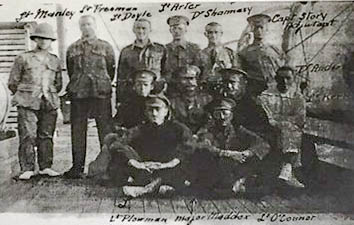
In January, Jim’s Reinforcements joined with the rest of the 22nd who had returned from Gallipoli at the training camp at Tel-el-Kebir, which was about 110 km northeast of Cairo. The 40,000 men in the camp were comprised of Gallipoli veterans and the thousands of reinforcements arriving regularly from Australia.
With the ‘doubling of the AIF’ as it expanded from two infantry divisions to five, major reorganisations were underway. Jim was transferred to the newly formed 60th Battalion on 26 February, 1916. It was made up of Gallipoli veterans from the 8th Battalion, a predominately Victorian unit, and new recruits from Victoria. Jim wrote of the reorganisation:
“We are hoping to be ‘formed into a new brigade’, instead of being reinforcements; if it comes off (and I think it will), my address will be suddenly changed. We are inlying battalion today and are ready to fall-in at a minute's notice (in case of an alarm) and move out fully pre-pared for action.
All kits are packed and water bottles full. The pack carried on the back consists of overcoat, change of underclothing, socks, towel, soap and shaving kit, also small field dressing, containing two antiseptic bandages. On the outside of the pack is strapped one blanket and one waterproof sheet and mess tin. In full marching order we carry about 70lb.
We went for a long route march last Wednesday, about 15 miles, in full marching order - it tried the endurance of some of them. A number fell out, owing to sore feet mainly. The officers march with full kit just the same.
Yesterday being Sunday, four of us got the day off and set out for Sakarra Pyramids - Hillard, Newey, Wanliss and myself, took train to Cairo, then tram to Gizeh, where the huge pyramids are and the Sphinx; from there we took donkeys and set out for Sakarra (a very ancient city of tombs).
There are only two of us again with our company. Arter has gone to attend a machine gun school, so Mr. Foden and I carry on. I do nearly all the outside work, as Foden has to attend Orderly Room and do office work. It suits me better out with the men supervising the training, and we get through some very interesting work. They are a good crowd, taking them on the whole, and the 7th-22nd won't be too `”dusty'' when it comes to the real thing.`”
His friend Lt Harry Wanliss was in the 29th battalion. He was killed on 26 September 1917.
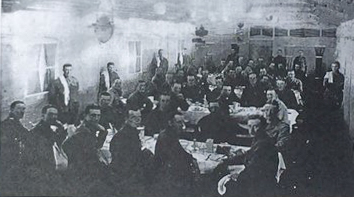
Jim Rhind - front, second from right, Neil Freeman, Jim’s mate, on his left
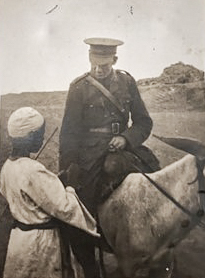
Found tucked in a leather purse belonging to my Grandmother Mabel
In mid-March they were inspected by H.R.H the Prince of Wales. After a month of training at the large camp at Tel-el-Kebir, they had a three-day, 50 km march in thermometer-bursting heat across the Egyptian sands from Tel-el-Kebir to Ferry Post, near the Suez Canal. Prior to marching, only ½ pint of water per bottle was available.
Source AWM4 23/15/1 15th Brigade War Diaries Feb-Mar 1916 p 6
In a letter dated 2 March 1916, Jim wrote:
“one looking on from a distance would think that we were being fired on, men dropping everywhere. You would just hear a bit of a groan and over a man would go, the man next to him would attend to him and the others kept going.’ ‘You may get tired of reading this, but one more example of the pluck of OUR BOYS.
Jim was very proud of the Australian soldiers. They remained at Ferry Post until 1 June, but their time in Egypt was not all work. A 5th Division Sports Championship was held on 14 June, which was won the by the 60th’s 15th Brigade. On 17 June they received orders to begin the move to the Western Front and were soon on trains to Alexandria.
Fromelles
The 60th departed on the troopship Kinfauns Castle from Alexandria on 18 June 1916. After a brief stop in Malta, they disembarked at 7.00 AM in Marseilles on 29 June were immediately entrained, headed for Steenbeque, 35 km from Fromelles, arriving on 2 July. They were headed to the area of Fleurbaix which was known as the ‘Nursery Sector’ – a supposedly relatively quiet area where inexperienced Allied troops could learn the harsh realities of Western Front trench warfare against the Germans.
But the quiet times did not last long. On the 7th they began their move to the Front, arriving in Sailly on the 9th. Now just a few kilometres from the Front, their training continued, although with a higher intensity, I’m sure. The move to Fleurbaix continued and 60th were into the trenches for the first time on 14 July. Now fully immersed in the war, Jim was realistic, but optimistic for what he is about to go through, as writes home for the last time on 16 July 1916.
My dear Folks at Home,
I am at last at the Front and have been in the front line during a heavy bombardment. Last night I saw the gas clouds rise but they didn’t come our way. The continual bombardment around this house shakes the dust down on the table. We were shelled last evening and had to get out into a bomb proof dugout in the yard. I cannot tell you much of what is going on but we are on the eve of a great attack along a large frontage, and we will be the first Austs. to take part in a big push. That is as far as I can say just now, but God willing, shall give you an account of it later.
The lads are in great spirits and are looking forward to what we hope will be a great advance. That there will be many missing at the roll-call goes without saying, but that cannot be helped, and we are very hopeful, knowing our strength of carrying everything before us, then the trouble comes to hold it, but we’ll be there.
The first night we came in I took a party into the front line, and I saw - my first glimpse – the German trenches. Flares go up continually and the whole front is lighted. I just look at it this way - if I am going to be hit, I will be and there is no use dodging bullets and flying pieces, and I am quite easy about it. These guns in the rear shake the house every time, just spasmodic shooting till tonight when every gun will be at it for all they’re worth, and we can expect some lively replying, which means that we will very likely pass the night underground.
I am in the best of health and good spirits and proud that at last we are going to do something.
Don’t worry you will see me back there one of these days, we are getting the enemy on the run all along the line, and I trust we will keep him going and give him a taste of what it is like to have an unlimited supply of munitions. Au revoir, with fond love,
From your loving,
JIM”
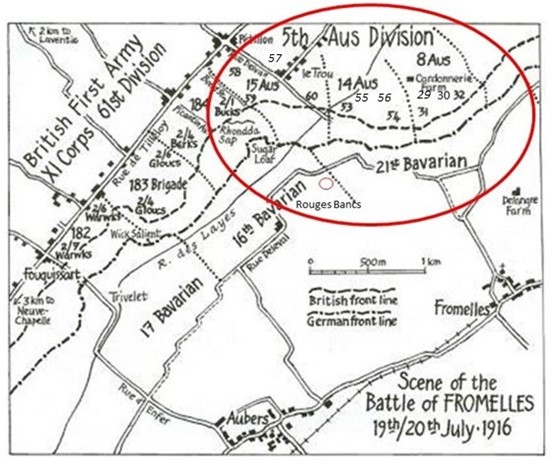
The overall plan for the battle was to use brigades from the Australian Fifth Division to conduct a diversionary assault on the German trenches at Fromelles, but the 60th were given a very difficult position for the battle, with the ‘Sugar Loaf’ salient, a heavily manned position with many machine guns, directly across from them. Fire from here could enfilade any troops advancing towards the front lines, giving the Germans a significant advantage. If the Sugar Loaf could not be taken, the Australian advances would also be subjected to counterattacks from that direction.
On 17 July, they were in position for an attack, but it was postponed due to unfavourable weather. There was a gas alarm, but luckily it was just that. By 4.20 PM on 19 July, they were once again in position in the trenches, readying for their attack. Artillery shelling from both sides was constant. The Zero Hour for advancing from their front-line trenches was to be 5.45 PM, but the Germans knew this attack was coming and were well-prepared. They opened a massive artillery bombardment on the Australians at 5.15 PM, causing chaos and many casualties.
The first of four waves of Australians went over the parapet at 5:45 PM, with the last wave going over at 6.00 PM. Casualties were immediate and heavy. The 15th Brigade War Diaries captures the intensity of the early part of the attack – ‘they were enfiladed by machine guns in the Sugar Loaf and melted away.’
Source AWM4 23/15/5, 15th Brigade War Diaries July 1916 page 56
It was reported that some got to within 90 yards of the enemy trenches. One soldier said he:
believed some few of the battalion entered enemy trenches and that during the night a few stragglers, wounded and unwounded, returned to our trenches.
Fighting continued through the night. With known high casualties in the 60th, they were relieved by the 57th Battalion at 7.00 AM. Roll call was held at 9.30 AM. In the ‘Official History of the War’, Bean said ‘of the 60th Battalion, which had gone into the fight with 887 men, only one officer and 106 answered the call’.
Source C.E.W. Bean Chapter XIII page 442
Jim was Missing in Action.
To get some perspective of the battle, when Charles Bean attended the battlefield two and half years later, he observed a large quantity of bones, torn uniforms and Australian kit still on the battlefield. The final impact of the battle on the 60th was that 397 soldiers were killed or died of wounds, of which 317 were not able to be identified.
Jim’s Fate and His Family’s Anguish
Given the 60th’s position in front of the Sugar Loaf machine gun emplacement and from all the post battle reports, Jim was likely killed not far from the Australian lines. Corporal G.F. Stanford (3489) reports:
”On the 19th July 1916 at Levantie, Lieut. Rhind was the Officer in charge of No. 1 Platoon, B. Company. He went over in (the) charge but was never seen afterwards. The platoon never got so far as the German trenches so informant thinks he could not have been taken a prisoner.”
Corporal R.E. Poulter (2878) supports this with his report below.
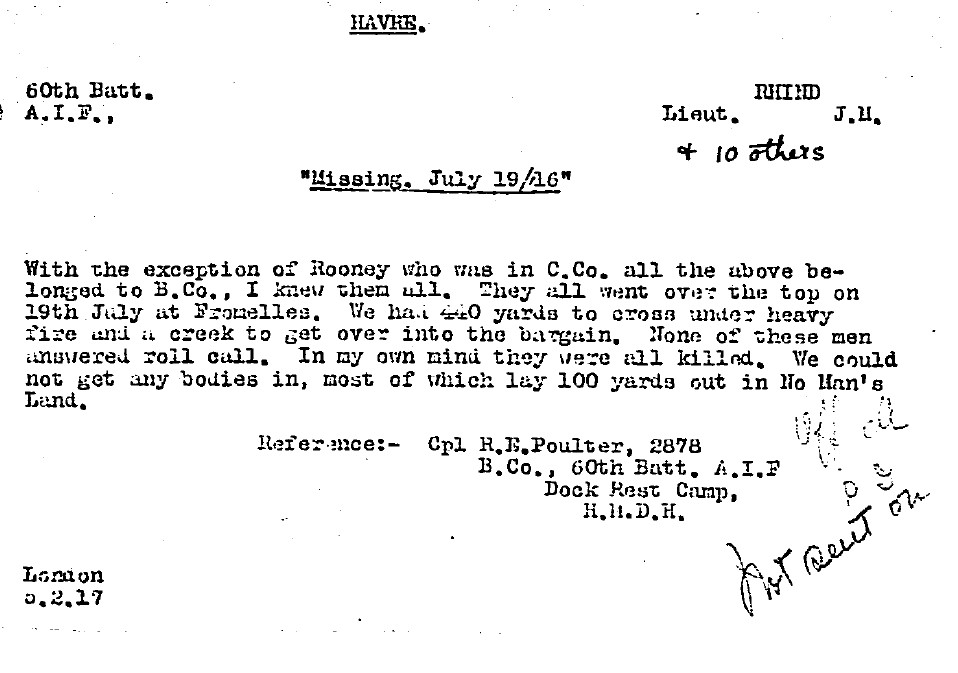
The Victoria Barracks in Melbourne telegraphed Jim’s father on 31 July to tell him Jim was missing. David was very proud of Jim, a son in a father's image, hence the pain when Jim was missing, especially so, as David didn’t even know that Jim was in France. The last letter received by the Rhind family had come from Egypt dated March 2nd. David wrote back to confirm Jim’s location. Letters from Jim continued to arrive for months, creating an illusion that he was still alive, but the nightmare was only just beginning.
David had to wait ‘patiently and anxiously’ for further news. In September 1916, he heard a rumour that Jim was wounded and in England. David wrote to the Army to ask them to follow it up, but soon after that, he realised that Jim would have made contact, if indeed he was in England, and David wrote to apologise for troubling them. Clearly David Rhind was doing all he could to confirm his son’s whereabouts.
Jim’s brother Hector (483) was in Essex at the time and he supported the family search for Jim by inquiring through the Red Cross in England. In September 1916, Jim’s personal effects - a Bible, a small leather handbag, a valise and a brown leather trunk were sent from London. As the Army was thorough in checking hospitals, POW camps, etc, it took until 4 August 1917 that a Court of Enquiry held in the field formally pronounced Jim’s fate as 'Killed in Action, 19 July 1916'. Jim was clearly missed by his entire family, as in the tribute placed by his lovingly strict Aunties, One of the best.
Jim’s younger brother Hector idolised his older brother and described him as a ‘lovely person, one of those people who was liked by everyone’. The grief and sadness surrounding the loss of their cherished son and the years of not knowing whether he was alive or dead took its toll on both of Jim’s parents. David, in particular, had lost a favourite son. His hair and beard whitened rapidly, likely as a result of the stress and the anxiety he experienced and with the final realisation that Jim was not coming home.
David later sold his land for soldier settlement to assist those who did return. Perhaps the finest tribute is from one a soldier under Jim’s command, L/Cpl J.L. Thomas (2191), who wrote to the Red Cross:
I deeply regret that such a fine man has met with such an untimely end. Lieut. Rhind was my Platoon Commander for a considerable time, but on his promotion he was transferred to No. 5 Platoon. We all loved him and I can honestly say that in my military career, never did I see a finer soldier.
Jim received the Victory Medal, the British War Medal, a Memorial Plaque and a Memorial Scroll.
He is commemorated at:
- V.C. Corner (Panel No 18), Australian Cemetery Memorial, Fromelles, France,
- The Australian War Memorial
- The East Geelong War Memorial
- and the Leopold and District Residents Honor Roll.
Jim’s Loss is Still Relevant
Great Niece Jacqueline McFarland reflections are proof that Jim’s loss almost 109 years ago is still relevant:
“As I write this, I well up with emotion because Jim was ours and he was a good man and yet he was only one and I know that our story was repeated thousands of times. I often reflect that Jim went all that way, prepared himself and prepared other men and then perhaps had a couple of minutes at most in No Man's Land before it all ended. Such a waste of a good, honourable man in a matter of moments. So all in all, Jim carried God, his faith, his family, his love of his mates, his respect for his leadership right to the top in 'Pompey Elliott', his abilities with horses, rifles and practical skills across those fields because for all those reasons it was his duty.”
Can Jim be found?
The Germans recovered 250 Australian soldiers from the battlefield and placed them in a burial pit at Pheasant Wood. This was discovered only in 2008. Efforts to identify the soldiers have been underway since, and as of 2024 180 of the soldiers have been able to be identified via DNA matching.As the fighting was so severe for the 60th and the burial site is not close to this area, only two soldiers from the 60th have been identified to be at Pheasant Wood.
DNA samples are being sought for family connections to
| Soldier | James Rhind (1887-1916) |
| Parents | David Rhind (1854-1932) Cummingston, Duffus, Elginshire, Scotland and Anna Millar Spence (1857-1935) |
| Siblings | Margaret Leslie 1882-1949 m James Cockburn | ||
| Elspet Agnes Jane (Elsie) 1883-1962 | |||
| Francis John (Frank) 1885- 1959 m Jessamine Braik | |||
| Anna Millar1889-1951 m Percy Buchanan | |||
| Mabel Catherine (Mabs) 1891-1972 m Richard McGarvie | |||
| Ada Barbara 1893-1978 m Reginald John Freeman | |||
| Hector George (Hec) 1895-1967 m Ada Minnie Nichols | |||
| Madeline Victoria (Maud) 1897-1977 m John Mortimer | |||
| Gladys Irene (Glad) 1889-1969 m James Cockburn |
| Grandparents | |||
| Paternal | John Rhind (1819 – 1890) Born Elginshire, Scotland Died - Wallacetown, New Zealand ,Elspet McKnockiter (1815 – 1880) Born Elginshire, Scotland Died Wallacetown, New Zealand | ||
| Maternal | David Spence Born 1825 Fife, Scotland Died 1879 Melbourne, Victoria, Australia, Margaret Leslie Morison Born 1824 Burntisland, Fife, Scotland Died 1895 Geelong, Victoria, Australia |
Seeking DNA Donors

Contacts
(Contact: carla@fromelles.info or geoffrey@fromelles.info).
(Contact: army.uwc@defence.gov.au or phone 1800 019 090).
Donations
If you are able, please contribute to the upkeep of this resource.
(Contact: bill@fromelles.info ).
